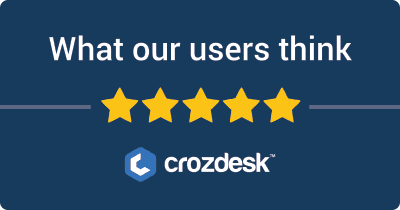
Introduction to Buffer and Hootsuite in Social Media Management
Buffer and Hootsuite are two of the most widely recognized tools in the realm of social media management. Both platforms serve the primary purpose of helping users streamline their social media strategies, enhance engagement, and analyze performance across various channels. Users frequently consider these tools due to their ability to save time, improve content scheduling, and provide insights into audience interactions.
Main Comparison Aspects
-
Features: Both Buffer and Hootsuite offer robust features, including social media scheduling, analytics, and reporting. Hootsuite is notable for its comprehensive dashboard that integrates multiple social accounts, while Buffer excels in simplicity and user-friendly scheduling options.
-
Pricing: Pricing structures differ; Buffer opts for a straightforward tiered approach based on the number of social accounts, while Hootsuite provides varied plans that cater to businesses of different sizes with additional capabilities.
-
Ease of Use: Buffer is often praised for its intuitive interface, making it suitable for beginners. Hootsuite, although slightly more complex, offers extensive customization options for advanced users.
-
Integrations: Both tools offer essential integrations with various applications, but Hootsuite boasts a wider range of third-party integrations, enhancing its functionality.
Evaluating these aspects can assist users in determining which platform best aligns with their social media management needs.
Buffer VS Hootsuite: Which tool is the most popular?
| Tool | Number of Reviews | Average Rating | Positive Reviews | Neutral Reviews | Negative Reviews |
|---|---|---|---|---|---|
| Buffer | 20 | 3.85 | 16 | 1 | 3 |
| Hootsuite | 320 | 3.24 | 190 | 19 | 111 |
Most Popular Tool: Hootsuite. It has the highest number of reviews at 320, despite a lower average rating of 3.24.
Least Popular Tool: Buffer. It has fewer reviews at 20 but a higher average rating of 3.85, indicating better user satisfaction in the fewer reviews.


Buffer and Hootsuite: Quick Comparison Overview
| Feature/Aspect | Ahrefs | SEMrush |
|---|---|---|
| Primary Features | – Site Explorer – Keyword Explorer – Backlink Checker – Content Explorer – Rank Tracker |
– Keyword Research – Site Audit – Position Tracking – Content Analyzer – Marketing Insights |
| Target Audience | – SEO professionals – Digital marketers – Agencies focusing on content marketing and backlink analysis |
– Digital marketers – SEO experts – Content marketers – Social media marketers and PPC specialists |
| Main Advantages | – Robust backlink analysis – Comprehensive keyword data – Intuitive user interface – Constantly updated index |
– All-in-one digital marketing tool – Extensive competitor analysis – Wide array of tools for SEO and PPC – Integrated social media management |
| Core Value Proposition | Focused on providing in-depth SEO insights, particularly strengths in backlink profiles and organic keyword rankings. Ideal for users prioritizing content strategy and link-building efforts. | Offers a holistic view of digital marketing, making it easier to manage all aspects of online presence through an extensive range of tools for SEO, PPC, and social media marketing. |
| Ideal Use Cases | – Conducting comprehensive link audits – Developing effective content strategies – Tracking backlinks and organic rankings – Keyword planning for SEO campaigns |
– Managing and optimizing PPC campaigns – Conducting competitive analysis for market positioning – Comprehensive content analytics and SEO tracking – Social media metrics and management |
Most liked vs most disliked features of Buffer and Hootsuite
| Platform | Most Liked Features | Most Disliked Features |
|---|---|---|
| Buffer | – Saves time by allowing post scheduling across multiple platforms. | – Advanced features can be costly; the basic plan is affordable but lacks depth. |
| – Competitive pricing, especially beneficial for small businesses and nonprofits. | – Issues with disconnections and integration, particularly with Instagram. | |
| – Intuitive interface, suitable for non-technical users. | – Lacks media library features and the ability to edit scheduled posts across platforms. | |
| – Useful for measuring engagement and optimizing content. | – High costs for combining multiple features, which may not appeal to users needing specific functionalities. | |
| – Quick response times for troubleshooting assistance. | – Absence of calendar view for scheduling and limited upload capabilities affects planning. | |
| Hootsuite | – Intuitive, user-friendly interface facilitates navigation. | – High pricing for available features, making it less ideal for small businesses. |
| – Ability to schedule posts across multiple platforms saves time and ensures consistency. | – Some analytics tools are viewed as lacking in depth, leading to suggestions for improved reporting. | |
| – Convenience of managing multiple accounts from one location. | – Integration concerns with other tools restrict functionality; users want better options. | |
| – Effective analytics help track post performance and engagement metrics. | – Mobile app features are limited compared to the desktop experience. | |
| – Collaboration tools for team members add value for organizations. | – Users express a need for enhanced training resources and better-organized support documentation. |
Key Features of Buffer vs Hootsuite
Sure! Here’s a comparison of the key features of Buffer and Hootsuite as social media management tools, highlighting how each feature benefits users, along with unique aspects each brand offers.
Buffer
-
Post Scheduling:
- Benefit: Users can schedule posts across multiple social media platforms ahead of time, allowing for consistent content delivery without the need for real-time engagement.
- Unique Aspect: Buffer’s simple and intuitive interface allows drip scheduling, enabling users to queue posts ideal for audience engagement times.
-
Publishing Calendar:
- Benefit: The visual calendar feature helps users plan and organize their content for all platforms in one place, making it easy to manage publishing timelines.
- Unique Aspect: Buffer allows users to drag and drop posts to adjust their publishing schedule seamlessly.
-
Analytics & Reporting:
- Benefit: Users can analyze performance metrics for each post and campaign, allowing for data-driven decisions to refine future content strategies.
- Unique Aspect: Buffer’s analytics are easy to understand and provide actionable insights, promoting user-friendly data interpretation.
-
Social Media Engagement:
- Benefit: Users can manage comments, likes, and direct messages from a centralized inbox, improving engagement with followers across platforms.
- Unique Aspect: Buffer’s engagement tools focus heavily on keeping interactions positive and streamlined without needing to switch platforms.
-
Content Creation Tools:
- Benefit: Buffer’s tools allow users to create visually appealing graphics and posts directly within the platform, simplifying the content creation process.
- Unique Aspect: Buffer’s capability to suggest the best times to post based on engagement data enhances content visibility.
-
Team Collaboration:
- Benefit: The collaboration tools enable team members to work together smoothly, assign tasks, and provide feedback on posts.
- Unique Aspect: Buffer distinguishes itself with customizable roles, allowing varied levels of access for team members.
Hootsuite
-
Comprehensive Dashboard:
- Benefit: Hootsuite provides a comprehensive dashboard that consolidates various social media feeds in one place, enabling users to monitor multiple platforms simultaneously.
- Unique Aspect: The ability to customize the dashboard layout gives users flexibility in arranging their workflow according to their preferences.
-
Post Scheduling:
- Benefit: Similar to Buffer, users can schedule posts across platforms. Hootsuite also provides bulk scheduling for high-volume posting needs.
- Unique Aspect: Hootsuite’s feature of AutoSchedule allows users to automatically select the optimal time to post based on historical engagement data.
-
Performance Analytics:
- Benefit: In-depth analytics enable users to track performance metrics, conversions, and ROI on campaigns, fostering data-driven marketing efforts.
- Unique Aspect: Hootsuite offers advanced reporting options that can be customized and exported, appealing to users needing detailed insights.
-
Social Listening:
- Benefit: Users can monitor brand mentions, trends, and keywords, helping them gauge public sentiment and respond proactively.
- Unique Aspect: Hootsuite’s social listening tools are robust, providing detailed insights that enhance brand management and community engagement.
-
Content Curation:
- Benefit: Hootsuite offers content discovery tools that allow users to find and share relevant third-party content, keeping their feeds active and informative.
- Unique Aspect: The integration with content sources within Hootsuite allows for streamlined content curation tailored to specific industry niches.
-
Apps & Integrations:
- Benefit: Hootsuite supports a range of third-party apps that enhance functionality, accommodating various business needs.
- Unique Aspect: Hootsuite’s extensive app ecosystem allows seamless integration with various tools, from CRM systems to customer support channels.
Summary
Both Buffer and Hootsuite offer essential features for social media management, but they cater to different needs and user preferences. Buffer excels in simplicity and ease of use, making it ideal for smaller teams or individual users. Hootsuite provides more comprehensive tools suitable for larger teams and enterprises requiring detailed analytics and social listening capabilities.
Choosing between the two will depend on your specific requirements, such as the depth of analytics needed, team collaboration, and the importance of content curation in your social media strategy.
Buffer vs Hootsuite Pricing Comparison
| Feature/Category | Buffer Pricing | Hootsuite Pricing |
|---|---|---|
| Free Tier | Yes, includes limited features | Yes, 30-day free trial available |
| Monthly Pricing | – Pro: $15 | – Professional: $99 |
| – Premium: $65 | – Team: $249 | |
| – Business: $99 | – Business: $739 | |
| Annual Pricing | – Pro: $144 (save 20%) | – Professional: $828 (save 30%) |
| – Premium: $600 (save 23%) | – Team: $2,688 (save 20%) | |
| – Business: $1,188 (save 20%) | – Business: $8,856 (save 20%) | |
| Number of Accounts | – Pro: 8 | – Professional: 10 |
| – Premium: 20 | – Team: 20 | |
| – Business: 50+ | – Business: 35+ | |
| Posts per Account | – Pro: 100 | – Professional: 10 scheduled posts |
| – Premium: 200 | – Team: 20 scheduled posts | |
| – Business: 200+ | – Business: 20 scheduled posts | |
| Analytics | – Pro: Basic analytics | – Professional: Advanced analytics |
| – Premium: Advanced analytics | – Team: Advanced analytics | |
| – Business: Advanced analytics | – Business: Comprehensive analytics | |
| Collaboration Tools | – Pro: None | – Professional: 1 user |
| – Premium: 1 user | – Team: 3 users | |
| – Business: 6+ users | – Business: 5 users | |
| Publishing Features | – Pro: Basic scheduling | – Professional: Auto-scheduling |
| – Premium: Additional features | – Team: Auto-scheduling | |
| – Business: Additional features | – Business: Auto-scheduling | |
| Support | – Pro: Email support | – Professional: 24/7 support |
| – Premium: Priority support | – Team: 24/7 support | |
| – Business: Dedicated support | – Business: Dedicated support | |
| Special Offers | 14-day free trial available | 30-day free trial available |
Summary of Differences
- Monthly vs. Annual Pricing: Buffer offers consistent pricing and savings on annual plans, while Hootsuite features larger savings for longer commitments.
- Number of Accounts: Buffer allows more flexibility with account counts at higher tiers compared to Hootsuite’s tiered structure.
- Analytics & Reporting: Buffer offers basic analytics at lower tiers, whereas Hootsuite includes advanced features at similar pricing levels.
- Collaboration Tools: Hootsuite provides more collaborative features, starting from its basic plan.
- Support Options: Hootsuite offers 24/7 support across multiple tiers, whereas Buffer’s support improves with higher tiers.
- Special Offers: Both platforms have free trials, but Hootsuite’s is longer, providing a month of exploration.
Support Options Comparison: Buffer vs Hootsuite
| Feature | Buffer | Hootsuite |
|---|---|---|
| Live Chat | Not available | Available for Pro and Enterprise plans |
| Phone Support | Not available | Available for Business and Enterprise plans |
| Documentation | Comprehensive articles covering various topics | Extensive help center with articles, FAQs, and guides |
| Webinars | Regularly offered, covering various features and updates | Regular webinars available on topics and best practices |
| Tutorials | Video tutorials available on their platform | Detailed guides and video tutorials on specific features |
| Community Support | Community forum for user interaction and support | Community forum for discussion and support |
| Email Support | Email support available | Email support for all plan levels |
Buffer provides a focus on documentation and community support but lacks live and phone support, whereas Hootsuite offers more direct support options, including live chat and phone support, alongside an extensive range of resources.
Unique Features of Buffer Vs Hootsuite
| Feature | Buffer | Hootsuite | Unique Value and Decision Factors |
|---|---|---|---|
| Pablo | Buffer provides a tool called Pablo that allows users to create images specifically for social media posts. | Hootsuite includes a design feature but not as focused as Pablo. | Pablo enables quick and easy image creation, enhancing visual content without the need for external design tools. This can significantly speed up workflow and improve post engagement. |
| Scheduling Optimization | Buffer’s "Best Time to Post" feature analyzes user engagement to suggest optimal scheduling times. | Hootsuite provides scheduling but lacks advanced optimization. | By leveraging data analytics, Buffer helps users maximize their reach and engagement, making it a crucial feature for brands aiming to increase social media effectiveness. |
| Story Scheduling | Buffer offers the ability to schedule Instagram Stories directly through the platform. | Hootsuite provides some capabilities but is not explicitly designed for stories. | This feature allows users to pre-plan their story content, facilitating better content strategy and consistent engagement on platforms like Instagram. |
| Link Shortening | Buffer integrates a built-in link shortener (Buffer’s own) for easy sharing of URLs. | Hootsuite uses third-party link shorteners. | The proprietary link shortener gives Buffer an edge in brand consistency and tracking, simplifying analytics and reporting for shared links. |
| Social Media Advocacy | Buffer’s “Amplify” feature empowers employees to share company content easily while monitoring their activity. | Hootsuite does provide employee advocacy features but not as integrated. | Engaging employees as brand advocates can enhance brand visibility and credibility, making it an attractive feature for organizations focused on expanding their reach through organic means. |
| Content Calendar | Buffer offers a visual content calendar that highlights scheduled and draft posts for easy management. | Hootsuite also has a calendar view, but Buffer’s is more user-friendly. | The intuitive design of Buffer’s calendar enables better organization of content strategies, making it easier for users to visualize their overall social media presence. |
| Analytics Dashboard | Buffer presents easy-to-understand analytics that provide insights tailored to enhance performance. | Hootsuite’s analytics are robust but can be overwhelming for new users. | Clear and simple analytics enable users to interpret performance easily, leading to quicker adjustments in strategy without a steep learning curve. |
These unique features set Buffer and Hootsuite apart in the realm of social media management tools, enhancing user experience with specialized functionalities that can cater to specific needs and workflows. The decision to choose either platform can greatly depend on the weight users place on these features and how they align with their social media goals.


